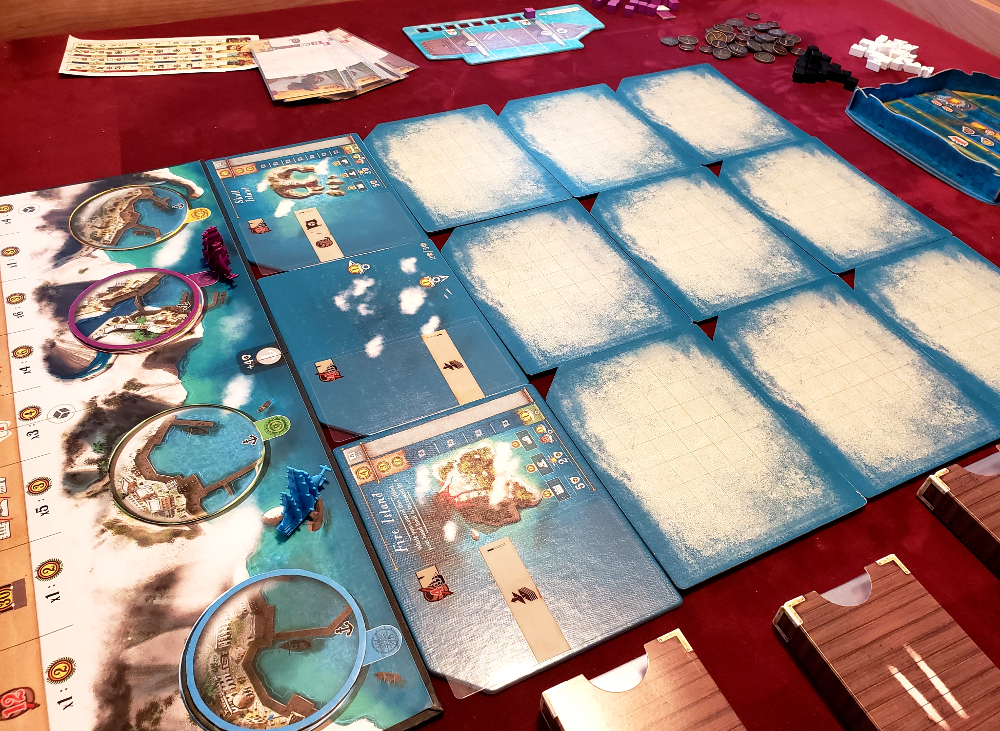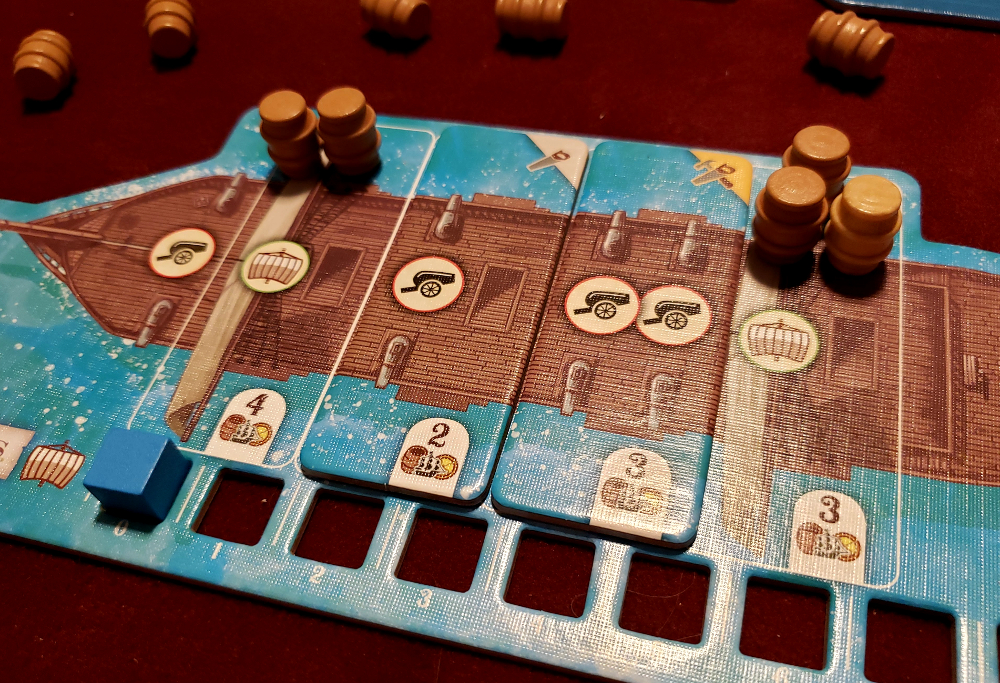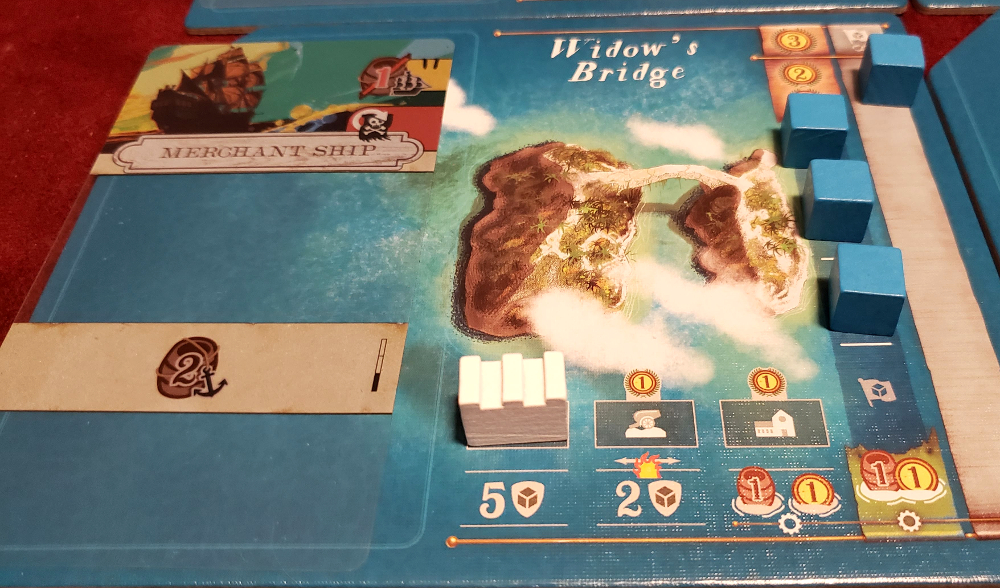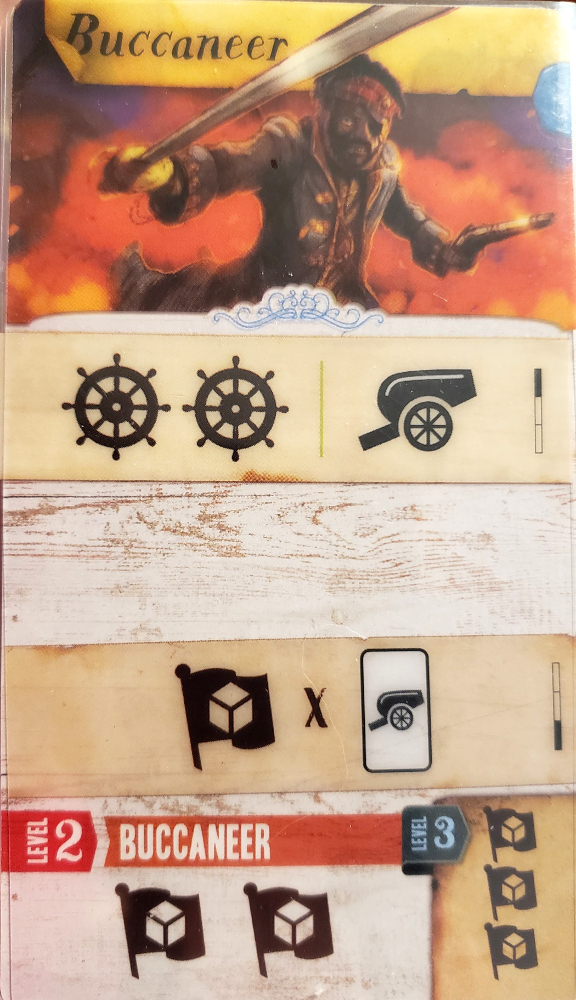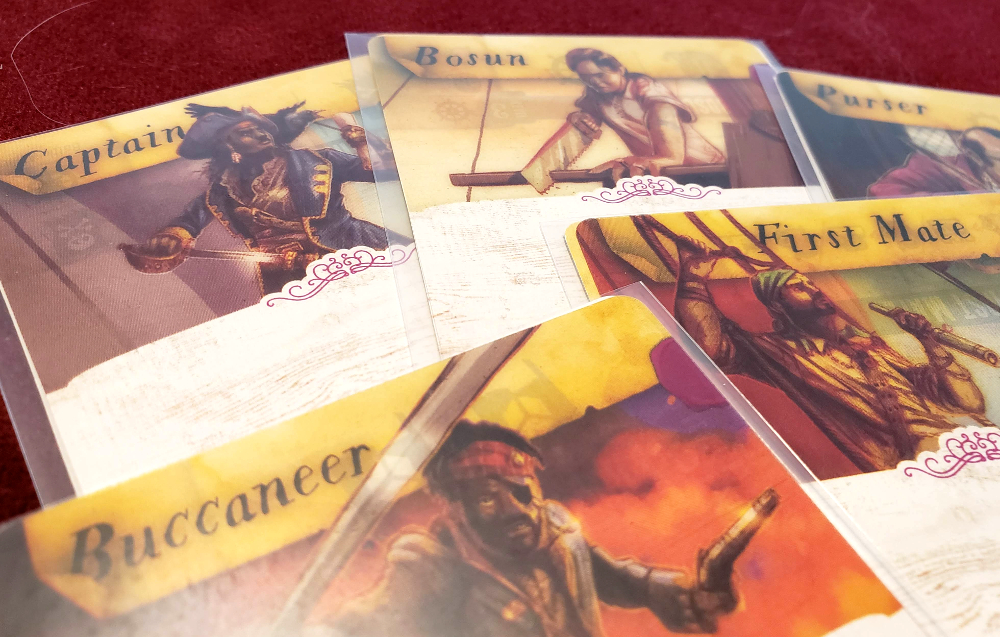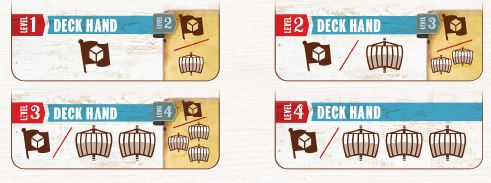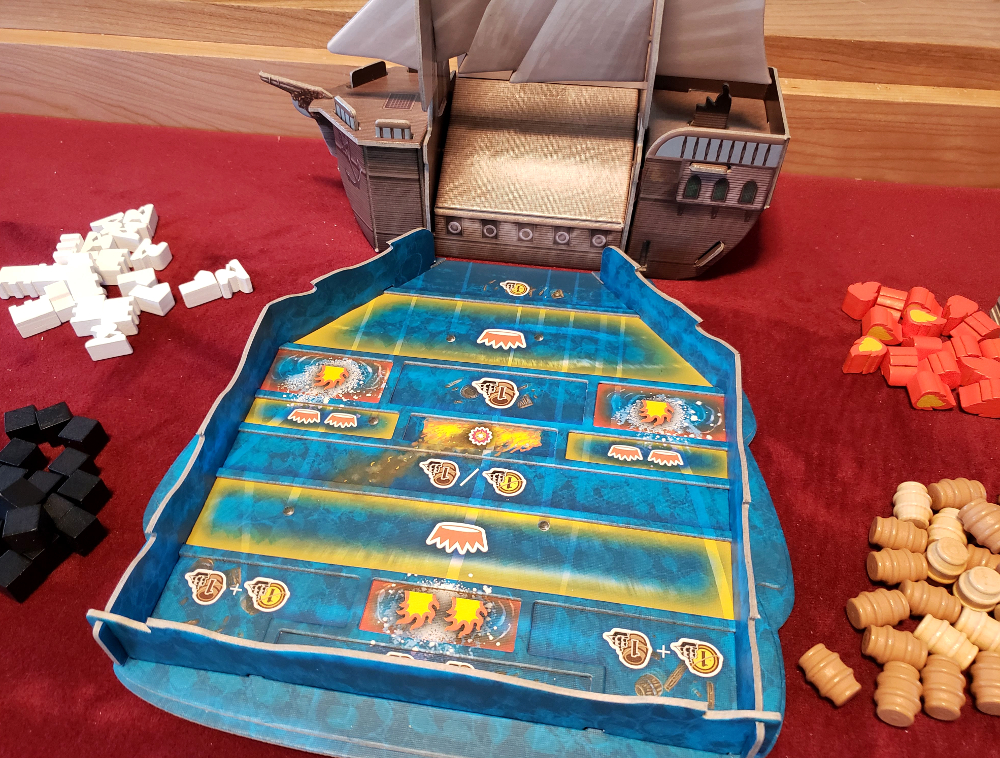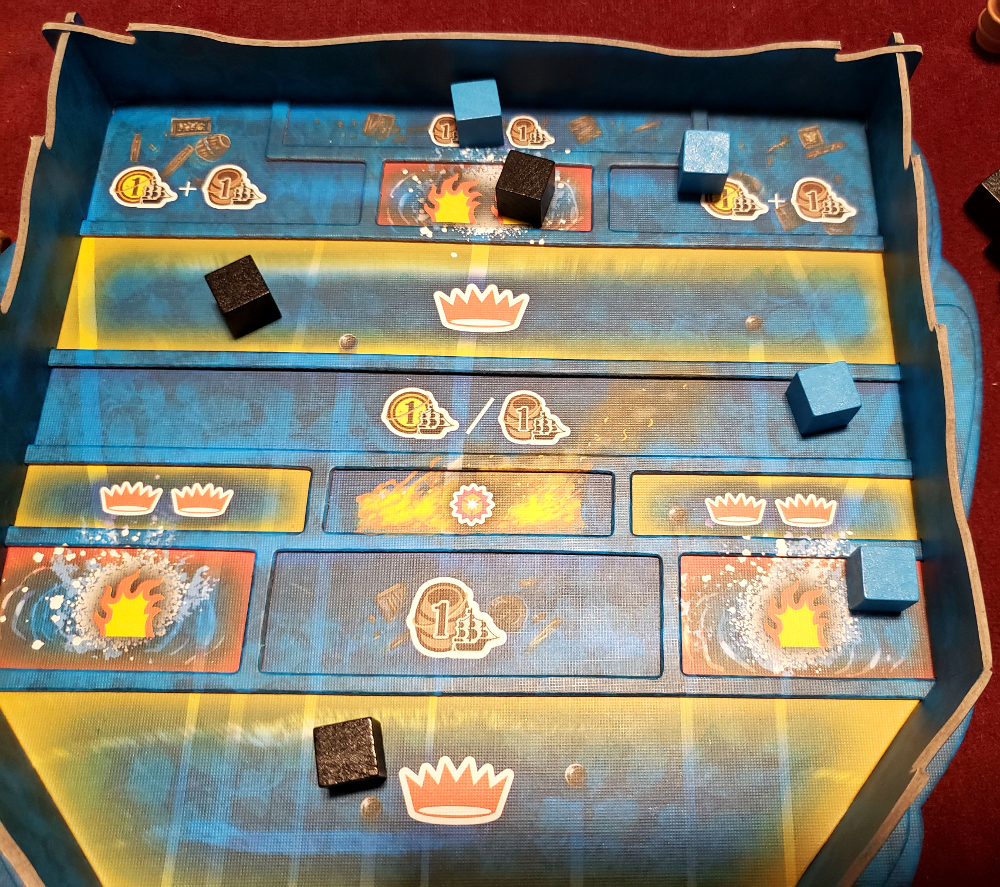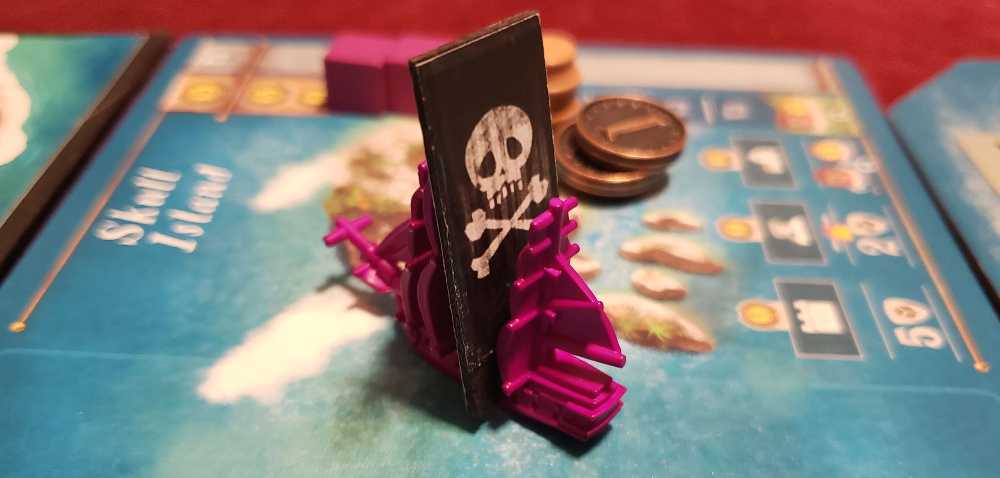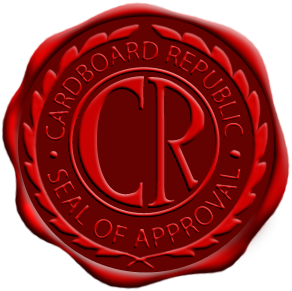The goal of any artist is to create something, preferably appealing, with the express intent of being shared and appreciated by others. The modes and methods to accomplish this are far-reaching, but the desire in nearly every case is to stimulate a reaction in its audience. To provoke. To inspire. To admonish. To raise one’s mood or lower one’s misconceptions. Art is the raw, distilled essence of the collective human enterprise, filtered through the aesthetic lens of its creators and anxiously shared with its intended audience – all in the hope of leaving an impact.
A painter hopes their canvas will get you to pause and think about what you’re viewing. A musician hopes their song will provoke an emotional response. A writer hopes their words will engross you in a compelling story.
As for a game designer, their principal hopes are to make a game an audience will find fun. Beyond all of the mechanics and visual trappings, the chief focus in making a game revolves around the remarkably simple (yet often nebulous) conceit: is this game enjoyable? And as no game universally caters to everyone, most established designers end up with a varying array of titles to their name, each catering to a different potential slice of gamerdom.
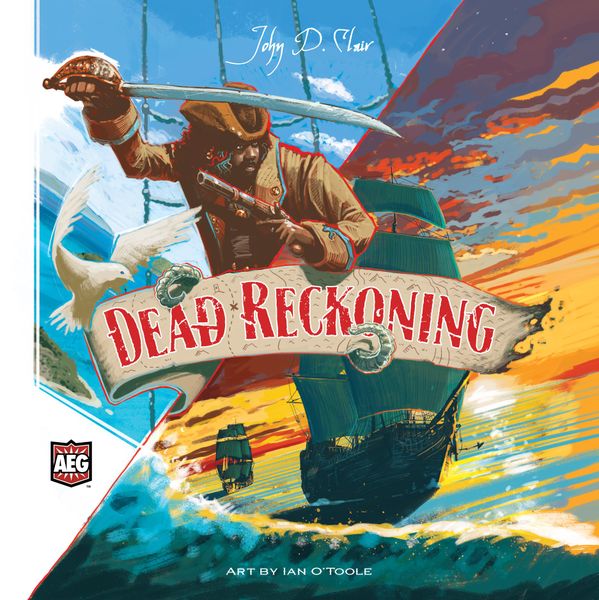 However, much like the musician who becomes forever tied to their greatest hit, many designers become associated with their most well-known contributions. It’s why, for instance, no matter how much he has tried, Richard Garfield is almost exclusively known for Magic: the Gathering – a game he created over 25 years ago. It’s why despite an extensive ludography, Rob Daviau is most known for his contribution of the legacy genre. It’s why most assume strategy-laden designers like Stefan Feld or Vital Lacerda are capable of forging a cerebral two hour game about mowing the lawn.
However, much like the musician who becomes forever tied to their greatest hit, many designers become associated with their most well-known contributions. It’s why, for instance, no matter how much he has tried, Richard Garfield is almost exclusively known for Magic: the Gathering – a game he created over 25 years ago. It’s why despite an extensive ludography, Rob Daviau is most known for his contribution of the legacy genre. It’s why most assume strategy-laden designers like Stefan Feld or Vital Lacerda are capable of forging a cerebral two hour game about mowing the lawn.
For designer John D. Clair, his own provenance to associative success comes by way of AEG’s ever-evolving Card Crafting System: a specific style of engine-building deckbuilders centered not on adding new cards to your deck but instead improving a fixed set of sleeved cards by sliding transparent modifiers into them. The first of these was the highly popular Mystic Vale, a straightforward deckbuilder and planned precursor to the larger and more complex semi co-op worker placement game Edge of Darkness. Interspersed between these two came Custom Heroes, combining card crafting with classic trick-taking.
Recognizing its highly adaptive nature, it was only matter of time before John & Co. would take the next step. Which, apparently, is to the high seas. Because that is where we find ourselves in Dead Reckoning, a swashbuckling, island-hopping adventure where your cards are your crew and gold is your religion.
So climb aboard as we embark for unknown dangers on unknown shores.
Dead Reckoning begins as a colorful, table sprawling assortment of resource tokens, upgrade tiles, and player components. In the middle of all this lay an unassuming harbor from which all your escapades will take place. Adjacent to the harbor is a 3×4 grid of randomized ocean tiles, the majority of which contain islands of some kinda but start the game unexplored. Like this:
To begin your monkey business, each player is outfitted with a small stash of gold, a basic ship board capable of low-level skullduggery, and a deck of exactly 12 cards that make up your own dirty dozen of a crew. In this game of exploration and area control, over a span of about two hours players move about the map, stake claim to island territories, upgrade their ships and crew, and do whatever it takes to increase their hoard of precious, precious gold.
Though Dead Reckoning brings with it many moving parts and ideas befitting a sandbox game with minimal guardrails, the general course of gameplay is largely intuitive. Indeed, while Dead Reckoning has a decent amount of complexity, the flow of the game itself is not complicated.
This is most apparent via the game’s turn structure. On your turn, you may take a series of actions as often and in any order you wish (for the most part). These actions largely boil down to: loading or unloading gold and cargo, playing and using abilities of cards in your hand, moving your ship, engaging in combat, and purchasing Advancement modifiers to upgrade your crew’s effectiveness.
In nearly all cases, however, the strength of your actions are dictated by a combination of clear and concise symbols found between your ship and any cards you play. Determining your movement for the turn, for example, involves adding up the number of sail symbols.
And sailing is, as you’d probably expect in a seafaring game, particularly important, whether for moving between locations or finding new ones.
Exploration makes up a key part of Dead Reckoning, since islands serve a dual purpose. First are the innate benefits of the islands themselves, which serve as resource depots during the game and VP bastions at the end. Every island provides three important traits that can be manipulated with your crew:
- The ability to produce gold and goods on them, which are needed to fund upgrades and generate VP.
- Manipulating Influence tracks, which determine control of the island and therefore who can take the precious booty off of it.
- The ability to add buildings to them that either increase production or make it more difficult for an opponent to steal control away.
Second, each island opens up the purchasing of an Advancement (upgrade) card on that space. Acquiring an Advancement normally just consists of spending the requisite costs from your ship and claiming it, which can be done up to twice a turn. Each ocean row further from the harbor provides increasingly more potent – but also more costly and specific – Advancement effects. Yet this variety affords its players an extensive amount of deck tailoring that can be done over the course of the game.
A subset of event-style Advancement cards, however, called Encounters, allow for you to attack it rather than pay for it, with the outcome of the skirmish determining which of the card’s two effects you get. The core game of Dead Reckoning comes with one type of Encounter card, but additional ones will appear via expansions which alter the flavor and strategies of the game.
More than anything else, careful management of your crew Advancements is paramount to accomplishing your goals. While almost every modifier can be used with any crew card, the game forces strategic considerations in determining which symbols are worth spreading out horizontally throughout your crew (such as repairing your damaged ship or purchasing improvement tiles) versus which to stack heavily onto a specific character (such as adding Influence to an island). This is reinforced both in the fact that you’re not required to play your entire hand every turn, as well as that you can hold on to an unsleeved Advancement card if you wanted to save it for a crew member you didn’t play that turn.
All of which makes Dead Reckoning the most versatile and elegant instance of the Card Crafting idea thus far.
Moreover, while Dead Reckoning’s aesthetic is particularly well done writ large, the refreshingly diverse crew card illustrations are especially laudable. Denoting a multiracial, multiethnic company capable of modest mercantile trade or aggressive freebooting – depending on your whim – they pleasantly demonstrate that in a fictional and aggrandized pirate setting, all you need to be a hale and hearty pirate is the right attitude. (Though a nice hat doesn’t hurt.)
Once you’ve completed your semi open-ended allotment of actions, your turn concludes by sleeving Advancements, drawing replacement cards, and deciding whether to operate in normal (Merchant) Mode or to fly the Jolly Roger and designate yourself in Pirate Mode – signaling a guaranteed fight with the next person to enter your space. Perhaps most important of all, though, is that each turn concludes by allowing you to “level up” one of the crew cards in your hand. Every crew card has four ability levels, and upgrading them provides increasingly substantial boosts to their base effects.
All of this elasticity of choice affords ample leeway for you to decide how to proceed with your agenda.
You know, once you discern what that is.
In Dead Reckoning, there are nine distinctly different Achievements to work towards, including hoarding money, extensively exploring the ocean, or building lots of structures. Each one pulls you in a specific direction, and experimenting with different combinations to work towards offers extensive gameplay flexibility from one playthrough to the next.
Once someone accomplishes their fourth Achievement, however, the end of the game is triggered. At that point, a number of endgame gold is doled out on a host of different criteria and the crew with the most gold secures their dominance of the high seas.
For as many things as Dead Reckoning commendably puts forth, there are two areas that bear specific mention, not insomuch as noteworthy deficiencies with the game but for setting appropriate expectations.
First, while AEG has been repeatedly touting Dead Reckoning as a pirate-themed 4X game, this doesn’t wholly line up with what most people think of 4X. Although the game has implicit elements of all four pillars, it would be much more accurate to describe it, as has already been done so here, as a thematic sandbox game. With minimal character limitations, the ability to change course at your discretion, and lack of a wholesale military-based path to victory, Dead Reckoning is more about roaming the seas and clashing over a handful of islands than trying to create the next great pirate-based hegemony. Dead Reckoning is enticing on many levels, but a 4X game it is not.
That is not to say that pointing your guns at someone doesn’t have its advantages.
Somewhat ironically, combat in Dead Reckoning ties more extensively into the risk/reward ethos one would expect with pirates than most other facets of the game…but it’s largely optional. There is liberal opportunity for lucrative payouts and favorable outcomes with combat, but it’s also entirely possible to have it completely backfire.
Moreover, from a rules perspective, combat in Dead Reckoning is also the most complex part of the entire game, mainly because there are slightly different processes depending on whether you are fighting an Encounter card, another player’s ship, or a building on an island.
In all cases, the general premise works the same way. First, the attacker counts up the number of cannon icons from their ship and played cards, specifying the number of Battle Cubes gained. The defender either gains a set amount (in the case of Encounters and buildings) or plays cannons of their own in ship-to-ship. These are dropped into an outsized and eye-catching ship-shaped cube tower, which spins them onto a field of outcome spaces. Some spaces will provide you gold and/or goods. Some make you take damage. Most importantly, a few contain crown icons, which are what ultimately determines who actually wins the fight.
The absolute worst combat outcome in Dead Reckoning is ending with your ship having 5 or more damage on it, which causes it to sink. This forces you back to your starting harbor location and costs you 5 gold. All of your cargo, crew, and ship improvements remain unharmed.
Which brings up the second area of expectation to clarify: Dead Reckoning has no zero sum realism. This is not a gritty economic simulation or a game about feigned historical accuracy, nor does it promise balanced combat parity. It is entirely possible for you to go into a fight with a significant cannon advantage, lose, and make off with plenty of plunder anyway. Although the game’s cube tower and results field is an appreciably different take on determining the outcome of an event, it is just as unpredictable an outcome as tossing a handful of dice. It’s merely a different (albeit more engaging) form of kinetic randomization.
And that’s a good thing.
Combat in Dead Reckoning is deliberately volatile, befitting the spirit of classic naval warfare, but as combat is not the game’s chief focus that randomness is an advantage, not a liability. Losing a battle is not meant to be prohibitively punishing, even though its chaotic and frenetic approach lends to the game’s adventurous pirate oeuvre more than any other aspect. But a Euro game Dead Reckoning is not.
Dead Reckoning has all the makings of the next great sandbox game. With its admirable presentation, copious replayability, and more player-led choices than a seafood buffet, it’s easy to dive into a world of plunder, piracy, and privateering. Yet what makes Dead Reckoning all the more compelling is that it’s also still a deckbuilder first and foremost. As pleasing as the rest of the game is, all of your plans are filtered through the skillful and tactical customization of a 12 card deck. Pairing these two seemingly disparate genres together, you don’t need to be a pirate to know you have found a worthwhile treasure in Dead Reckoning.
If this melding of core deckbuilding functionality with exciting open world-esque possibilities sounds like something you’d like to get on board with, then set sail for its Kickstarter!
This project has earned the Seal of the Republic
Photo Credits: Dead Reckoning cover and artwork by Alderac Entertainment Group.

